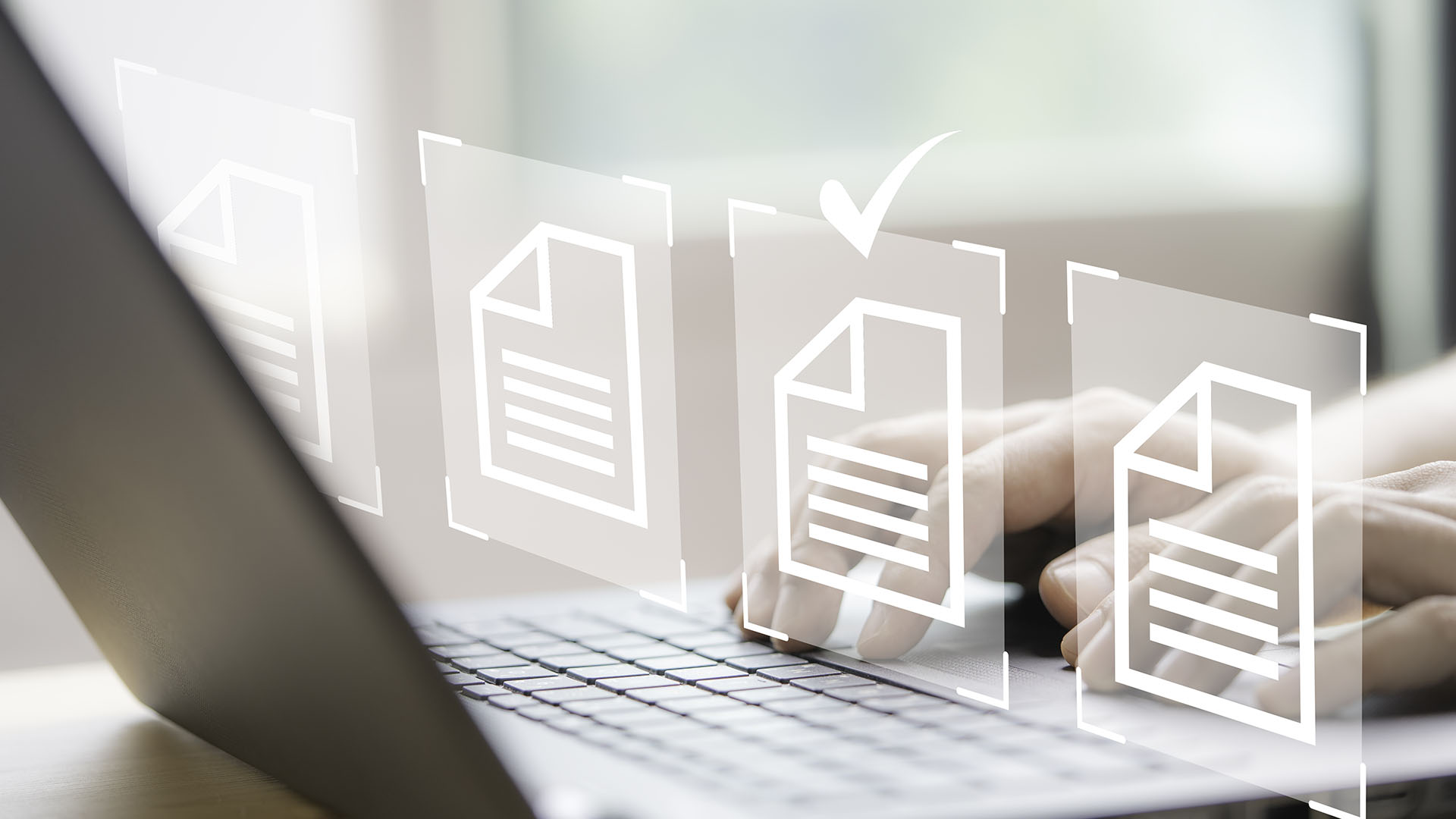We use cookies.
Formpipe uses cookies to improve how the website works for you as a visitor. To change your settings or for more information about cookies, click on 'Settings'.
Cookie Settings.
Formpipe uses cookies to improve how the website works for you as a visitor. Here you can change and see information about what cookies are used. Turn on and off categories and save your choice. To learn more click 'Cookie policy'.
Necessary cookies
These cookies are essential for the website to operate correctly and cannot be disabled without ruining the usability of the website. We delete these cookies when you leave the website, where possible.
| Name | Retention period | Information about the cookie | Disclosure of information to third party |
| ASP.NET_SessionId | Used to maintain an anonymised user session by the server. | 1 session | No. |
| cookie-consent-settings | Used to determine if the user has accepted the cookie consent, contains consent choises | 30 days | No. |
| lidc | To promote data center selection | 1 day | Yes, LinkedIn |
| li_mc | Used as a temporary cache to avoid database lookups for a member's consent for use of non-essential cookies and used for having consent information on the client side to enforce consent on the client side | 2 years | Yes, LinkedIn |
| BIGipServer~EPWS~EPWSWEB103_HTTP_Pool | Determine pool | 1 session | Yes, EPiServer |
Statistics, anonymous data collection
These cookies are used to track our visitors across our website. They can be used to build up a profile of search and/or browsing history for every visitor, or to better understand how the user uses the website so that we can improve it. Identifiable or unique data may be collected. Anonymized data may be shared with third parties.
| Name | Information about the cookie | Retention period | Disclosure of information to third party |
| _fbp | Used by Facebook | 90 days | Yes, Facebook |
| AnalyticsSyncHistory | Used by LinkedIn | 30 days | Yes, LinkedIn |
| bcookie | browser identification | 2 years | Yes, LinkedIn |
| lang | Language preference | 1 session | Yes, LinkedIn |
| li_gc | Used to store guests' consent to the use of cookies for non-essential purposes | 2 Years | Yes, linkedIn |
| lms_analytics | Used to identify LinkedIn Members in the Designated Countries for analytics | 30 days | Yes, LinkedIn |
| _guid | Used to identify a LinkedIn Member for advertising through Google Ads | 30 days | Yes, LinkedIn |
| _ga | Used by Google Analytics to identify a visit. | 2 years | Yes, Google gains access to the information collected by the cookie. |
| _gid | Used by Google Analytics to identify a visit. | 24 hours | Yes, Google gains access to the information collected by the cookie. |
| _gat_gtag_[Property-ID] | Used by Google Analytics to identify if a visitor (web browser) is new or recurrent. | 1 minute | Yes, Google gains access to the information collected by the cookie. |
Marketing, targeted advertisement
These cookies are used by third party to track and collect data to be used in advertisment. They can be used to build up a search and/or browsing history for every visitor. Identifiable or unique data may be collected.
| Name | Information about the cookie | Retention period | Disclosure of information to third party |
| ajn | Used by adnxs for marketing | 90 days | Yes, adnxs |
| uuid2 | Used by adnxs for marketing | 90 days | Yes, adnxs |
| IDE | Used by Google doubelclick | 2 years | Yes, doubleclick |
| _gcl_au | Google adsense | 30 days | Yes, Google |
| msd365mkttr | Dynamics marketing | 2 years | Yes, Microsoft |
| NID | Google ads optimization | 6 months | Yes, Google |
| __Secure-3PAPISID | Builds a profile of website visitor interests | 2 years | Yes, Google |
| __Secure-3PAPISID | Builds a profile of website visitor interests | 2 years | Yes, Google |
| __Secure-3PAPISID | Builds a profile of website visitor interests | 1 year | Yes, Google |
| UserMatchHistory | Sync LinkedIn Ads ID | 30 days | Yes, LinkedIn |
| lms_ads | Used to identify LinkedIn Members off LinkedIn in the Designated Countries for advertising | 30 days | Yes, LinkedIn |
We would love to talk to you. Give us a call, visit us or just send an email.
Support
Whether you're looking for some
assistance or further information
regarding your solution, we're here
to help. Yes, take me there!
Sweden
Headquarters, Stockholm
Formpipe Software AB
Sveavägen 168, Stockholm
Box 231 31, 104 35 Stockholm
SE – Sverige
Tel: +46 8 555 290 60
Email
Linköping
Gasverksgränd 2, 582 22 Linköping
Tel: +46 8 500 072 25
Email
Västerås
Metallverksgatan 6, 721 30 Västerås
Örebro
Engelbrektsgatan 6, 702 12 Örebro
Denmark
Lautrupvang 1
2750 Ballerup
Tel: +45 3325 6555
Email
Germany
Formpipe Lasernet GmbH
THE SQUAIRE 12
Am Flughafen
60549 Frankfurt am Main
Email
UK, Cambridge
First Floor, Block A, Harston Mill,
Cambridge – CB22 7GG
Tel: +44 1223 872747
Email
UK, Nottingham
Unit 1, Isaac Newton Centre
Nottingham Science Park
Nottingham – NG7 2RH
Tel: +44 115 924 8475
Email
USA
Formpipe, inc.
1200 US Highway 22 E Suite 2000
Bridgewater, NJ 08807
Tel : +1 908 200 7937
Email
Transforming Documents: 5 Key Insights from 2023’s Beyond The Document episodes

2023 proved to be an exciting year for Beyond The Document. Hosted by Formpipe’s Head of Banking, Ben Saxton, the podcast saw 17 episodes recorded across four different countries, including in Vienna at Temenos’ flagship conference, Temenos Community Forum, and at Money 20/20’s almighty European event in Amsterdam.
As Beyond The Document enters its fourth year exploring the exciting developments and opportunities in output, document and customer communications management across the ERP and banking industries, it is an ideal time to look back at the episodes we published in 2023 and spotlight the most interesting insights and trends discussed across the year.
The Inescapable Shift to E-Invoicing
With the advent of e-invoicing, businesses are experiencing a transformative change in how they conduct transactions. This digital leap is driven not only by organisations' preference for efficiency and cost savings but also by the ever-increasing legal requirements imposed by the European Union and other governments worldwide. E-invoicing, once an organisational choice, is rapidly turning into statutory law.
When Ben Saxton sat down with Dictymatec’s Sales Manager, Cédric Caussé, on Beyond The Document back in June 2023, it was clear this shift was at the forefront of organisations minds. Cédric explained that starting in 2024 (and delayed to 2026 in France), it's not just about receiving e-invoices, which is already mandatory, but about having to accept an e-invoice if you receive one.
Cedric discussed this point further when he said: “Every company will have to send invoices and this will start in July 2024, for the biggest ones [largest taxpayers in the European Union]. And then you have a calendar of two or three years [for smaller taxpayers].”

E-invoicing goes beyond simple electronic delivery of an invoice. It encompasses a system where invoices are issued, received, processed, and stored digitally. The implications for businesses are enormous, with efficiencies being realised in shorter processing times, reduced errors, and improved cash flow management. Moreover, statutory adherence to e-invoicing also ensures businesses remain compliant with tax regulations, which can differ across regions and over time.
You can find out more about European e-Invoicing standards and how Formpipe’s Lasernet solution can ensure compliance here.
Looking to the Future: Hyper-Personalisation and Mobile Imperatives
A future-oriented perspective on customer communication management highlights a key concept that has gained significant traction over the last year: hyper-personalisation. Organisations must holistically embrace the individual expectations of their customers, offering personalised content delivered through preferred channels, with mobile technology at the forefront.
Formpipe’s Head of Business Solutions, Tom Hurrion, joined Ben Saxton on the podcast in December 2023, raising the importance of hyper-personalisation and the influence mobile phones have contributed.

Tom introduced it by saying: “The expectation on the consumer of digital data is that they want it in the way that they want to receive it, so in the channel that they receive it. And mobile phones are obviously one of the key areas there, but also how they want it to be, that they want it personalised to them.”
He further explored where it may differ between organisations and customers when he said: “It could be that the company that's producing that document, maybe they want to have it personalised to them and their branding and how they want to be seen by their customers to the outside world.
But the consumers themselves, they might want to be able to see their e-commerce document in a certain way. They might want to have an emphasis on the colours or some kind of dynamic change or something that they have some tangible effect on.”
This imperative is more than just a trend - it's a reflection of the natural progression of consumer demand. As we set our sights on 2024, the capability to offer tailored, mobile-centric communication solutions will be a defining factor for businesses aiming to thrive in a digital-first world.
Evolution and Growth of Business Central
Amidst the bustling ERP landscape, Microsoft Business Central has carved out an impressive space for itself, becoming one of the fastest-growing ERP solutions on the market. Originally designed to cater to the needs of small to medium-sized businesses (SMBs), Business Central has become a formidable choice, in part due to its relatively lower cost of entry, the simplicity of its licensing model, and the ease and speed with which projects can be deployed.
Nick Collard, ERP Partner Manager at Formpipe, spotlighted Business Central’s growth in the market back in September 2023, when speaking to Ben Saxton on Beyond The Document.
Nick explained one of the reasons for its growth was due to: “the lines are becoming blurred, probably because of the ever-increasing functionality within Business Central. But this is really where our partners expertise comes in and really digging into the customer's requirements and presenting them with a recommendation on the correct ERP platform.
Now a real-world example is that we have a German manufacturing customer running 500 users in Business Central now, whereas historically that would firmly be in the F&O space. So as I mentioned, the lines are becoming more blurred.”

The rise of Business Central can also be tied to a continual expansion of its capabilities and the role of partners in the ERP sector is more critical than ever. As the functionality of Business Central grows, clients rely on experts to navigate the expanding range of options and tailor solutions to their specific requirements.
Our Business Central team were out in Lyon, France, in November, 2023, attending Directions EMEA, the flagship Business Central event in Europe. You can gauge some of the insights they gained here.
AI's Growing Presence in Banking
In the realm of financial services, artificial intelligence (AI) is no longer a futuristic concept but a prevalent force transforming sectors, including banking. Over the past decade, innovative strides have been made, with AI becoming deeply integrated into banking operations.
Traditionally, banks have relied on decision-tree AI for processing and decision-making. However, innovations such as deep learning and neural networks are now propelling AI capabilities forward, pushing the boundaries of what machines can learn and accomplish. But it does provide risks for banks exploring the technology.

Joining Ben Saxton on the podcast back in October 2023, Fabrice Gouttebroze, Managing Director of S&G Technology Services, highlighted one of the struggles banks face when saying: “The main risk, which is actually harnessed by the legislature, is related to the explainability. So the closer you mimic the human mind, the more difficult it is to explain how you reach the decision.
And yet the regulator, GDPR, in that instance in Europe and the equivalent in the UK obliged us banks or any organisation which use AI obliged us to explain the decision. So that's a big risk from a point of liability for banks, because if you can't explain it, then you can be fined enormously. And with deep learning and neural networks, it's almost impossible to explain how the machine came to this decision.”
To meet regulatory demands, the industry is progressing towards post-event explainability approaches. Frameworks like SHAP (SHapley Additive exPlanations), LIME (Local Interpretable Model-agnostic Explanations), and ELI5 (Explain Like I'm Five) have emerged as solutions striving to demystify the 'black box' of complex AI decisions in banking.
You can find out more in Ben Saxton’s article exploring how to drive innovation and overcoming technological challenges with AI here.
Cloud and SaaS Adoption in APAC
With the cloud's influence on business scalability and agility, APAC organisations are increasingly adopting Cloud solutions and Software as a Service (SaaS) models. Sessions hosted at Temenos Community Forum (TCF) in May 2023, have highlighted these areas as pivotal for current and future growth. They showcase a significant upward trend in the adoption of cloud infrastructures and SaaS applications, which serve as a foundation for improved customer experience and operational efficiency.

Navin Dulani, APAC Regional Head of Banking Products at TechMahindra, took time out at TCF to speak to Ben Saxton on Beyond The Document about the challenges and strategies of cloud and SaaS adoption in the APAC region.
Navin raised awareness to the potential client view of cloud and SaaS when he said: “They are comfortable with SaaS as an offering. They are comfortable with cloud as an offering. They're still not comfortable with where data resides.
So I think that comfort is slowly building in and it is incumbent on us, the ecosystem on the tech side, to bring more and more of comfort to that by ensuring the right levels of cybersecurity practises and encryptions and methodologies and processes that support it.”
The move towards cloud and SaaS is interpreted as an irreversible shift by many in the banking industry, and these technologies offer the benefits of agility, cost-efficiency, and the possibility of continually evolving services through ongoing updates and innovations. But building the comfort and confidence of banks in the APAC region with cloud and SaaS hosting in order to reap the full benefits has become a priority by many companies like TechMahindra and will continue to do so in 2024 and beyond.
A robust disaster recovery plan will assist in building the confidence and comfort of a cloud solution. Find out more about how Formpipe Cloud’s disaster recovery solution will protect your data in an article by our Head of Cloud Services, Charlie Cotton, here.
More Beyond The Document Inbound
2023 proved to be an insightful and exciting year for Beyond The Document and the podcast returns in February 2024 for a new season filled with more discussions from guests around the world. Stay up to date and never miss an episode by following the podcast on your go-to platform of choice.



